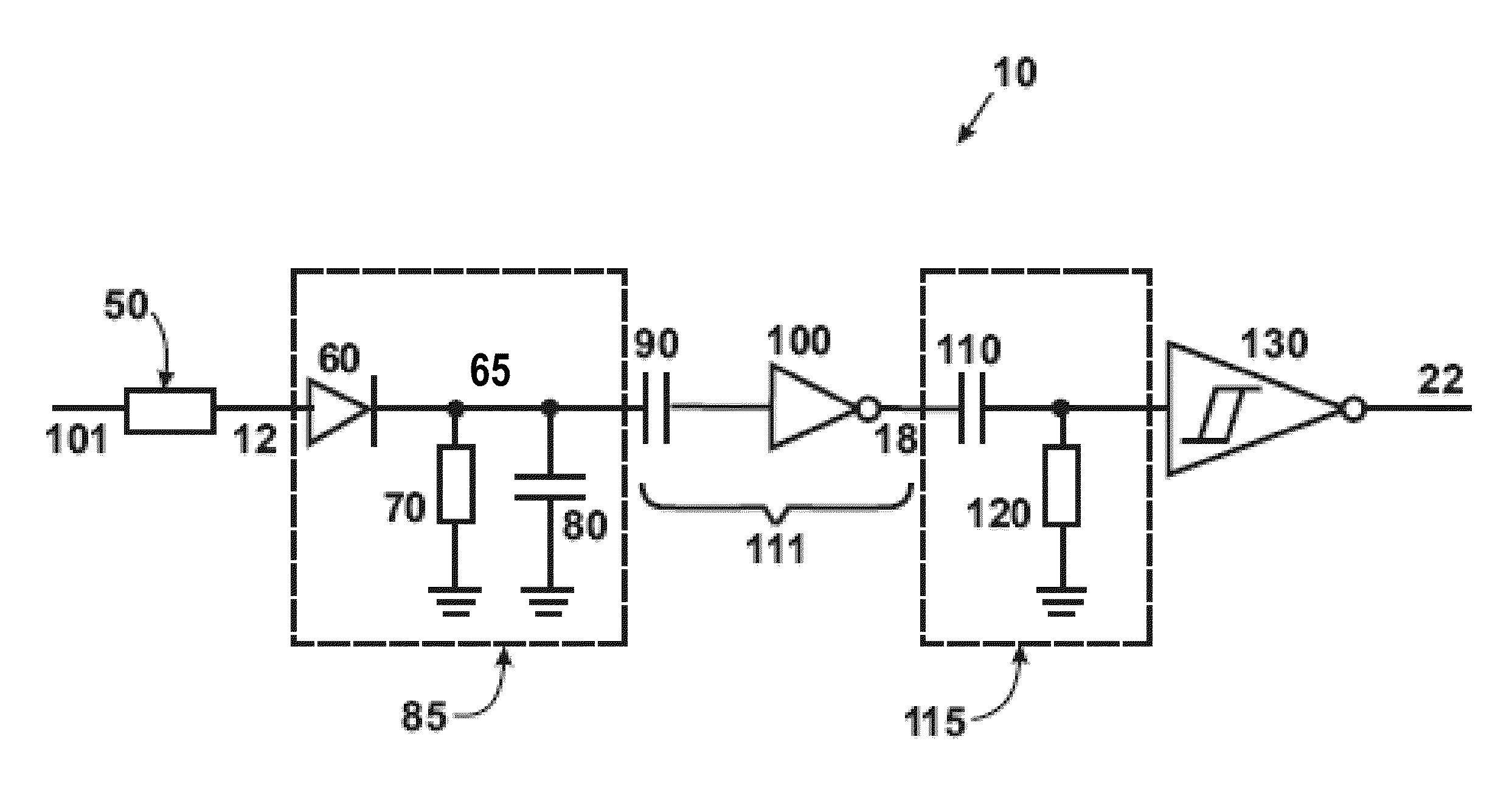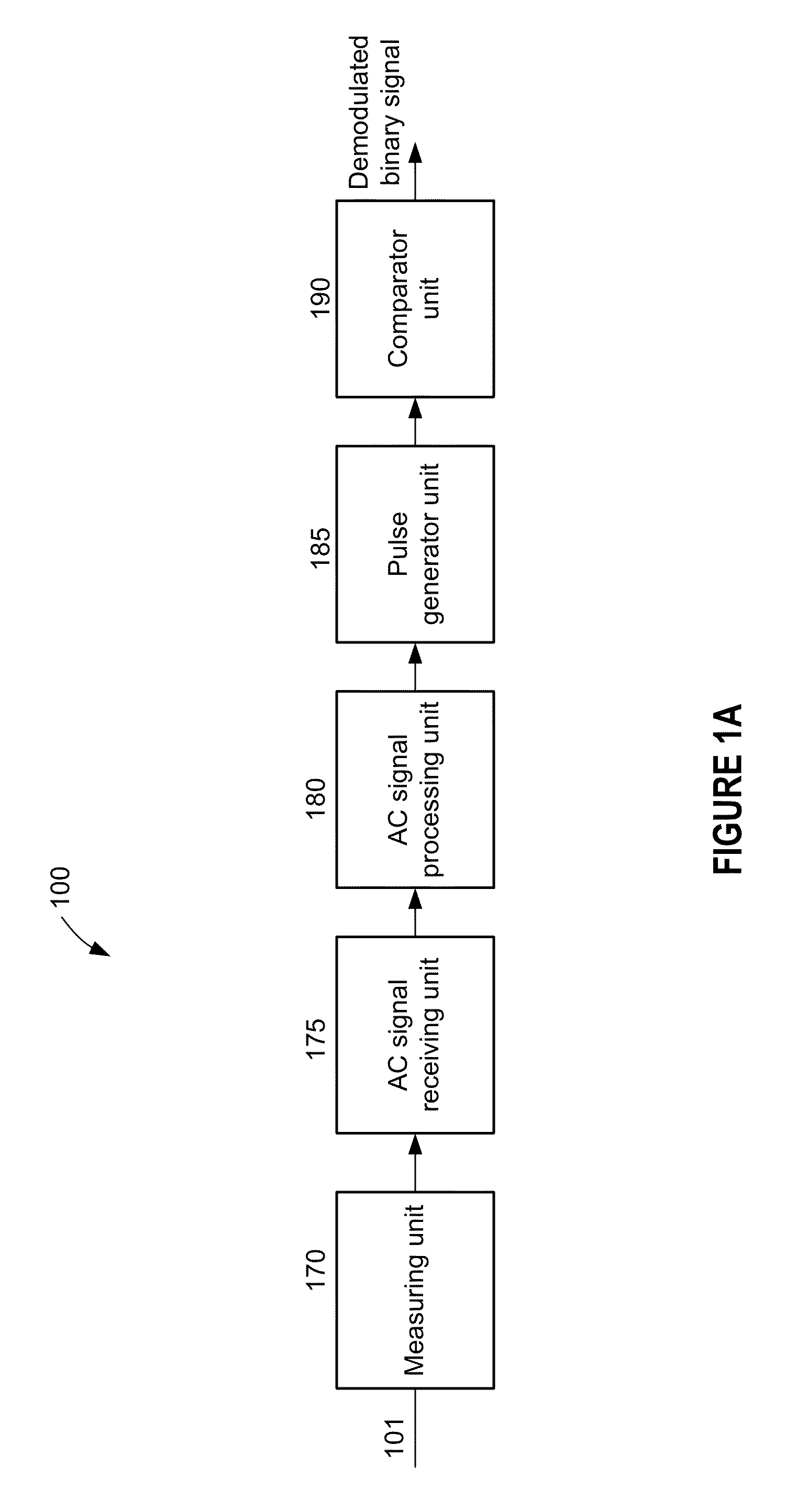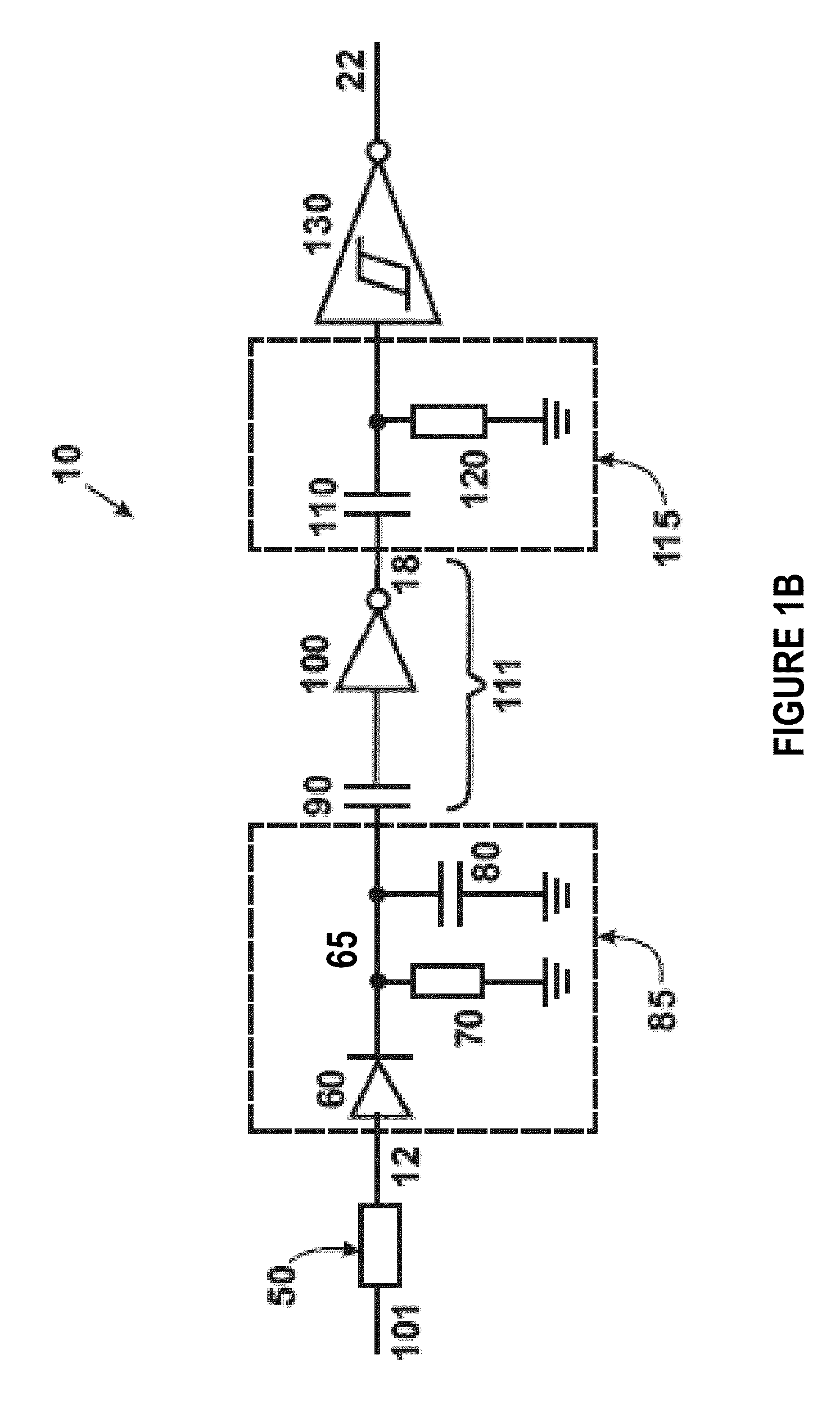Amplitude shift keyed (ASK) demodulation pattern and use in radio frequency identification (RFID)
a technology of amplitude shift and demodulation pattern, which is applied in the direction of amplitude demodulation, digital transmission, pulse technique, etc., can solve the problems of relatively complex and expensive structure implementation, and approach, however, offers good performance, and achieves the effect of increasing the rate of change of rising or falling edges
- Summary
- Abstract
- Description
- Claims
- Application Information
AI Technical Summary
Benefits of technology
Problems solved by technology
Method used
Image
Examples
Embodiment Construction
[0017]Embodiments in accordance with the present invention relate to a demodulator for amplitude shift keyed (ASK) signals. More particularly, in some embodiments, the disclosed demodulator can be used in an RFID transponder receiving an ASK signal from the interrogator (reader). However, it would be recognized that the invention has a much broader range of applicability, and can be used in applications requiring ASK demodulation.
[0018]Embodiments in accordance with the present invention are based on a non-coherent detection scheme for demodulation of ASK signals. Specifically, once the envelope signal of a received ASK signal has been extracted, an AC coupling is used to block the DC component of the signal. The DC-blocked envelope signal is indicative of a digital data content, e.g., the digital data information embedded in an RFID tag. In an embodiment, the envelope signal is verified in its shape and its magnitude value. In another embodiment, an amplifier may be used to increas...
PUM
 Login to View More
Login to View More Abstract
Description
Claims
Application Information
 Login to View More
Login to View More - R&D
- Intellectual Property
- Life Sciences
- Materials
- Tech Scout
- Unparalleled Data Quality
- Higher Quality Content
- 60% Fewer Hallucinations
Browse by: Latest US Patents, China's latest patents, Technical Efficacy Thesaurus, Application Domain, Technology Topic, Popular Technical Reports.
© 2025 PatSnap. All rights reserved.Legal|Privacy policy|Modern Slavery Act Transparency Statement|Sitemap|About US| Contact US: help@patsnap.com



